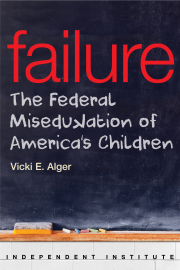Just in time for National School Choice Week, a new national poll finds that close to two-thirds of Americans favor school choice and bold reforms. Hopefully, California lawmakers are listening.
The American Federation for Children’s Fourth Annual School Choice Survey polled 1,100 likely November 2018 voters and found 63 percent of respondents support the concept of school choice, including 41 percent who “strongly” support it.
The survey was conducted by Beck Research, a respected Democratic polling firm, and the results show strong support for school choice across the political spectrum. Among those favoring school choice are: Democrats, 54 percent; independents, 62 percent; and Republicans, 75 percent. Fully 61 percent of white Americans support school choice, but support is especially strong among minorities, including: African-Americans, 66 percent and Latinos, 72 percent.
What’s more, the survey findings help shatter some prevailing myths about school choice support among targeted constituencies. For example, it is commonly assumed that school choice isn’t needed or wanted beyond inner-city areas, where the “really bad” schools are. Not so. Majorities of likely voters support school choice regardless of their locale, including respondents living in areas that are designated: large metro, 56 percent; small metro, 62 percent; suburban, 64 percent; fringe/exurban, 70 percent; and rural, 67 percent.
These results suggest that school choice isn’t just an escape hatch out of truly bad schools. It’s a pathway into schools that are better fits for students based on their unique individual needs.
Perhaps that’s why nearly two out of three parents (64 percent), including public-school parents (63 percent), support school choice.
And what types of school choice do Americans favor most? In most cases, they are the choice programs the California legislature has refused to enact, including: special-needs scholarships, 83 percent; scholarships for military dependents, 77 percent; education savings accounts, 75 percent; and tax-credit scholarships, 65 percent.When it comes to education reform, most Americans want “major changes,” not tinkering around the edges—and their ranks have swelled to 65 percent this year, up from 58 percent last year. The desire for major reform also enjoys widespread, diverse support, including voters who are: African-Americans, 77 percent; Latinos, 69 percent; millennials, 67 percent; rural/fringe residents, 63 percent; Democrats, 61 percent; Independents, 62 percent; and Republicans, 69 percent.
“This is the time for policymakers to think boldly about putting students first and providing more and better educational options to ensure every child has access to a great education,” noted John Schilling, president of the American Federation for Children.
One example of bold thinking would be for California lawmakers to enact tax-credit-financed education savings accounts, or ESAs, for preschool, elementary, middle, and high-school students. ESA programs are the latest advance in educational choice and have been enacted in six states.
Under most existing programs the state deposits at least 90 percent of eligible state formula funding into students’ ESAs. Parents receive a type of dedicated-use debit card to purchase approved educational services for their children, including special education therapies, tutoring, online courses, private school tuition, and testing fees. Unused funds roll over for future education expenses, including college tuition. Parents are required to submit quarterly expenses, with receipts, for independent verification, and regular program audits help prevent misspending. If unauthorized spending is discovered, parents must repay the state or face legal prosecution.
Like the American Federation for Children national survey, a recent poll by the Public Policy Institute of California found that most Californians across political and socio-economic lines support tax-credit scholarships—including two-thirds of public-school parents. ESAs funded through tax-credit contributions would go a long way toward satisfying Californians’ demand for more education options and more responsible use of education funding.
California’s current education system, which largely rations education based on where a child’s parents can afford to live, is a relic of a bygone era. Such a system cannot provide the customized preparation students need. In contrast, tax-credit ESAs would empower parents and guardians to personalize their child’s education, and would foster an educational landscape that can quickly adapt to meet the diverse needs of students and their families.









